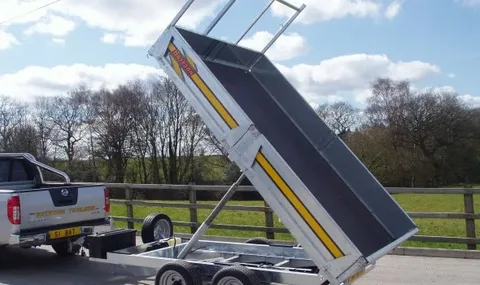The VE Commodore is a beloved icon in Australian automotive engineering, combining performance and style. The radiator overflow tank is one critical yet often overlooked component that keeps your ride running smoothly. This small but mighty reservoir regulates engine temperature and ensures optimal coolant levels. Neglecting its maintenance can lead to significant issues, affecting your vehicle’s performance and longevity.
Let’s explore everything you need to know about maintaining your Ve commodore radiator overflow tank. From recognizing signs of malfunction to essential maintenance tips, we’ve got you covered! Whether you’re a seasoned mechanic or an enthusiastic DIYer, keeping your cooling system in top shape will make all the difference on the road. Let’s get started!
Understanding the importance of a radiator overflow tank
The radiator overflow tank is crucial to your VE Commodore’s cooling system. It is a safety net, preventing coolant from spilling out when the engine heats up and pressure builds. This mechanism ensures your vehicle doesn’t overheat, protecting vital engine parts. When the coolant expands due to heat, it flows into this reservoir instead of leaking onto the ground. Once temperatures drop, the overflow tank helps draw coolant back into the radiator, maintaining optimal levels.
Without a properly functioning overflow tank, you risk overheating issues or losing coolant altogether. Such scenarios can lead to catastrophic engine damage and costly repairs. Regularly checking and maintaining this small but significant part will safeguard your vehicle’s performance while extending its lifespan on those long drives around town or beyond.
Signs of a malfunctioning radiator overflow tank
A malfunctioning radiator overflow tank can lead to serious engine issues. Coolant leakage around the tank is one of the first signs to watch for. Puddles under your vehicle indicate that something isn’t right. Another red flag is inconsistent coolant levels. If you frequently top off the fluid, it’s time for an inspection. An overflowing tank may also suggest problems with pressure regulation in the cooling system.
Keep an eye on the warning lights on your dashboard as well. If the temperature gauge rises higher than usual, it could mean that your cooling system isn’t functioning effectively. A cracked or damaged overflow tank often shows signs of wear and tear, such as discoloration or brittleness. Address these signs early to prevent more extensive damage!
Maintaining your Ve-commodore radiator overflow tank
Maintaining your Ve-commodore radiator overflow tank is essential for optimal performance. Start by checking the coolant levels regularly. A well-maintained coolant level helps regulate engine temperature and prevents overheating.
Next, inspect all hoses and connections linked to the overflow tank. Look for cracks or signs of wear that could lead to leaks. Replacing any damaged components promptly will prevent more significant issues later.
Cleaning the overflow tank should also be part of your maintenance routine. Dirt and debris can accumulate inside over time, affecting its efficiency. If necessary, consider replacing it with a new one to ensure reliable function.
This simple guide ensures that your VE Commodore remains in peak condition while preventing unexpected breakdowns during drives. Regular attention now means fewer headaches later on!
Checking and topping off coolant levels
Maintaining optimal coolant levels is crucial for your VE Commodore’s performance. Start by locating the radiator overflow tank near the front of the engine bay. Check the level against the markings on the side of the tank. If it’s below the minimum line, it’s time to top it off. Use a high-quality coolant that matches your vehicle’s specifications.
When adding coolant, do so gradually to avoid overfilling. For precision and cleanliness, it’s best to use a funnel. Always ensure you’re working with a cold engine; this prevents burns from hot fluids or steam. After topping off, securely close the cap to maintain pressure within the system.
Regularly checking and maintaining proper fluid levels enhances cooling efficiency, prolongs engine life, and prevents costly repairs.
Inspecting hoses and connections
Regularly inspecting the hoses and connections of your Ve-commodore radiator overflow tank is essential for preventing leaks and maintaining optimal performance. Start by visually checking all hoses connected to the overflow tank. Look for any signs of wear, cracks, or bulges. Next, ensure that the clamps holding these hoses are secure. Loose connections can lead to coolant loss and overheating issues. If you notice any damp spots around joints or on the ground beneath your vehicle, it clearly indicates that something may be amiss.
Remember to check for proper hose routing. Hoses should not be pinched or kinked. Obstructions can restrict flow and cause pressure build-up in the cooling system. A few minutes spent on this inspection could save you from expensive repairs.
Cleaning and replacing the tank if necessary
Cleaning your Ve-commodore radiator overflow tank is essential for optimal performance. Over time, dirt and debris can accumulate inside the tank, affecting efficiency. Regularly inspect it for any signs of buildup. To clean the tank, carefully remove it from its mounting. Use warm water and mild soap to scrub the interior with a soft brush. Rinse thoroughly until all residue is gone. Allow it to dry completely before reinstallation.
Sometimes, cleaning isn’t enough. Replacing the overflow tank becomes necessary if you notice cracks or significant wear. A faulty tank can lead to coolant leaks or pressure issues that affect engine performance. When selecting a replacement, ensure it matches your VE Commodore’s specifications. Quality aftermarket parts are available if OEM options aren’t suitable for your needs. Always prioritize maintaining this component to keep your vehicle running smoothly.
Tips for preventing common issues
Regularly inspect the radiator overflow tank for any cracks or signs of wear. Minor issues can escalate quickly, leading to leaks and overheating.
- Ensure that hoses are securely connected and accessible from kinks. Loose connections can cause coolant to escape, so checking them is essential.
- Use only the recommended type of coolant for your VE Commodore. Mixing different types can create a sludge that clogs the system.
- Keep an eye on coolant levels after long drives. If you notice a sudden drop, investigate immediately, as it may indicate a leak.
- Additionally, park in shaded areas when possible during hot weather. Extreme heat can stress your cooling system and lead to premature failure of components like the overflow tank.
Following these simple tips, you’ll help ensure reliable performance from your radiator overflow tank over time.
Benefits of ve commodore coolant overflow bottle
The VE Commodore coolant overflow bottle plays a crucial role in your vehicle’s cooling system. It ensures that excess coolant is stored safely, preventing any overheating issues during long drives or demanding conditions.
Maintain Optimal Coolant Levels
One of the primary benefits is its ability to maintain optimal coolant levels. This helps regulate engine temperature and enhances performance. A well-functioning overflow tank can significantly extend the life of your radiator and engine components.
Safety Measure
Additionally, this component acts as a safety measure against pressure build-up. When your engine heats up, it expands, and the overflow bottle allows for proper coolant expansion without risking leaks or ruptures.
Promotes Efficiency
Using a reliable Ve-commodore radiator overflow tank also promotes efficiency in repair processes. If you encounter cooling problems down the line, identifying issues related to this specific part can simplify troubleshooting efforts, saving both time and money on repairs.
Keeping your VE Commodore running
Regular maintenance is vital to keep your VE Commodore running smoothly. One of the most critical components to monitor is the radiator overflow tank. It plays a crucial role in managing coolant levels and preventing overheating.
Pay attention to any unusual sounds or temperature fluctuations while driving. These could indicate issues with your cooling system that need immediate attention.
Regularly check fluid levels and top off as necessary. A well-maintained overflow tank can save you from costly repairs down the line.
Additionally, inspect hoses for leaks or cracks. Ensuring they’re tight and intact helps maintain optimal performance throughout your vehicle’s life.
Consider cleaning out the overflow tank periodically to avoid sludge build-up, which may affect functionality. A little preventive care extends the lifespan of your VE Commodore’s engine, ensuring it remains reliable on every journey.
Specifications of Holden Commodore Overflow Bottle
The Holden Commodore overflow bottle is a crucial component for effective coolant management. Explicitly designed for VE models, it ensures optimal performance during drives.
Typically constructed from durable plastic, the bottle can withstand high temperatures and various environmental conditions. This resilience helps maintain its integrity over time, preventing leaks that could lead to engine overheating.
Its approximate capacity of 1 litre provides ample space for excess coolant expansion. The design includes clear markings on the side for easy level monitoring.
Additionally, this overflow tank often features a pressure relief cap. This prevents excessive pressure build-up while allowing steam to escape safely.
Compatibility with various cooling systems in the Commodore lineup makes it versatile and reliable. Properly functioning specifications ensure smooth operation under different driving conditions without compromising vehicle performance.
Importance of Maintaining the Radiator Overflow Tank
The radiator overflow tank is crucial to crucial to your VE Commodore’s cooling system. It helps manage excess coolant, preventing pressure build-up and potential leaks. When the engine heats up, the coolant expands and flows into this tank. If it’s not maintained correctly, you risk overheating issues that can lead to severe engine damage.
Regular checks ensure that the coolant levels remain within optimal limits. A well-maintained overflow tank also prolongs prolongs the lifespan of other cooling components by reducing wear and tear. Moreover, neglecting routine maintenance could result in costly repairs down the line. Ensuring your radiator overflow tank is functioning correctly contributes to overall vehicle reliability and performance on the road.
Applications of VF Overflow Bottle
The VF Bottle is crucial for various applications, particularly in the VE and VF Commodore models. Its primary function revolves around managing coolant overflow during vehicle operation.
- This bottle effectively collects excess coolant that may escape due to thermal expansion. It prevents spillage and maintains optimal engine operating temperatures.
- In racing scenarios, the VF Overflow Bottle plays an essential role in performance. Drivers push their vehicles to extremes, generating heat beyond typical limits. An efficient overflow bottle ensures the cooling system remains stable under high-demand conditions.
- Moreover, it’s beneficial for everyday driving situations, too. Maintaining proper coolant levels enhances engine longevity and efficiency when commuting or running errands.
Enthusiasts often modify their vehicles for enhanced performance. Upgrading to a high-capacity overflow bottle can provide extra assurance during intense usage or modifications requiring higher cooling needs.
Features of VE Overflow Bottle
The VE overflow bottle is engineered with precision to ensure reliability. Its durable construction withstands the rigors of daily driving and offers long-lasting service. Designed for optimal fluid retention, it efficiently manages coolant levels throughout varying engine temperatures. This feature prevents overheating and promotes a stable operating environment for your VE Commodore.
Another standout aspect is its easy installation process. The design allows for straightforward mounting without extensive tools or modifications. Compatibility with various models ensures you won’t face issues during replacement or upgrades—keeping your vehicle on the road longer and performing better than ever.
Tips for Preventing Damage to the Radiator Overflow Tank
Regular inspections are essential to keeping your Ve-commodore radiator overflow tank in top shape. Look for wear or cracks; even minor damages can lead to more significant problems.
Avoid overfilling the tank. It’s designed to handle a specific amount of coolant, and too much fluid can cause leaks and pressure issues.
Watch out for debris and dirt that may accumulate around the tank. Keeping this area clean prevents clogs and promotes proper functioning.
Always use high-quality coolant compatible with your vehicle’s specifications. This helps prevent corrosion inside the system and prolongs the life of your overflow tank.
If you notice any warning lights on your dashboard related to engine temperature or cooling systems, address them immediately to avoid potential damage down the line. Taking proactive steps will ensure reliable performance from your radiator overflow tank.
Installation Tips
Start with the right tools when installing a Ve-commodore radiator overflow tank. An essential toolkit should suffice, but you might need specific sizes of wrenches or pliers.
Ensure the engine is excellent before you begin to avoid burns and spills. Remove any debris around the existing tank for easy access.
Carefully detach the old overflow tank by loosening clamps without damaging hoses. Inspect all connections during removal; cracked or frayed hoses may require replacement.
Position your new radiator overflow tank properly, aligning it with existing mounting points. Tighten all connections securely to prevent leaks later on.
After installation:
- Fill the new unit with coolant as per specifications.
- Run your vehicle for a few minutes while monitoring for leaks and ensuring everything functions smoothly.
- Regularly check after installation to confirm integrity over time.
Future potential and development of new technologies
The future of automotive technology holds exciting potential, especially in coolant management systems. Innovations are emerging that focus on efficiency and sustainability. Smart sensors could soon monitor coolant levels and temperatures in real-time. This data would optimize performance while alerting drivers to issues before they escalate.
Additionally, advancements in materials may lead to lighter, more durable overflow tanks. Such developments could improve vehicle weight distribution and fuel efficiency. Integration with smartphone apps is another possibility. Imagine checking your Ve-commodore radiator overflow tank status right from your phone.
Electric vehicle also open the door for new cooling technologies explicitly designed for their unique needs. As these trends unfold, enthusiasts can anticipate a more innovative approach to maintaining their beloved cars’ cooling systems.
Conclusion
Keeping your ve commodore radiator overflow tank in top shape involves more than regular oil changes and tire checks. The radiator overflow tank plays a crucial role in maintaining optimal engine performance. Please pay attention to its condition regularly. Simple tasks like checking fluid levels or inspecting hoses can save you from costly repairs. Invest time cleaning or replacing parts when necessary; it’ll make a significant difference. A little proactive care goes a long way.
FAQS
Maintaining your Ve-commodore radiator overflow tank is crucial for optimal vehicle performance. Below are some frequently asked questions that can help you better understand the importance of this component and how to care for it.
What is the purpose of the radiator overflow tank in a VE Commodore?
The radiator overflow tank collects excess coolant when the engine heats up and expands. This ensures that your cooling system maintains adequate levels without causing pressure build-up or damage.
How often should I check my Ve commodore radiator overflow tank?
It’s advisable to inspect your radiator overflow tank regularly, ideally during routine maintenance checks or whenever you’re topping off your coolant levels. Keeping an eye on fluid levels helps prevent overheating issues.
Can I replace a damaged Ve commodore radiator overflow tank myself?
If you’re comfortable with basic automotive repairs, you can replace a damaged radiator overflow tank at home. Ensure you have all necessary tools and follow safety precautions while working on your vehicle’s cooling system. If you need more clarification, consulting with a professional mechanic is always recommended.
Understanding these aspects of the Ve-commodore radiator overflow tank will better equip you to keep your car running smoothly and efficiently.
| Related Business Listings |
| Contact Directory |
| Local Business Profiles |



